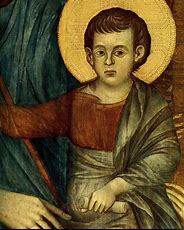Origin of semiotics
The semiotics is a science that studies the value of words in context of
discourse and his significance on use that we have given to these words, for
examples, a word on movie has value given if we consider context of movie and
former cutes, but also context and environment of movie, son we can understand
genre of movie, comedy, dramatic, of other, we can understand an environment of
a movie by cloths or armies; this is semiotics, because by a sign we can
connect this movie to a time, by a monument we can connect this context to a
country. These are signs alone, summary indications the we can and we must
connect to a time and moment. This exercise is natural and normal, or rather
daily, then nothing is now. But we also can ask to us, around when this
exercise has began? I think that this question certainly can busy for some
second, neither minutes, I think it because I am optimistic, some second alone;
but we can consider that this exercise is born, at least by written form, by
Aristotle and precisely by Analytical, where Aristotle studied value and
context of words, then their value on discourse, synonymous, contrary, and
value regard meaning. A citation I think that can could aid us: “the protasis
is enunciable affirmative or negative around a thing on confront to other. This
enunciable is or universal or particular or indefinite. I say that is universal
be inherent to everything or nothing, partial be inherent to something or not
be inherent to something, at last indefinite this is without be inherent
universally or particularly. We can think that matter of semiotics is a
think very near to us; because it is present in de Saussure because he has
given some ideas necessary to development of semiotics think, and it is raise
for subsequent ones thinks and analyses. We must consider that the origin of
semiotics is Categories of Aristoteles; this is a book that is together with
Organon, and First analytics is a first development of matter of semiotics. We
can consider some step of this books: “Every thing that we can say to them,
independently from other, it isn’t without statement, but with connection we
can find statement. In fact it seems that is true or false, but things that we
say without connection, nothing is true or false for example: man, white, he
runs, he wins”. This example certainly doesn’t explains the development of
semiotics, but we must think that the semiotics is matter about means of words
and their means, and this primordial examination is origin of subsequent
examination. I can say it because in the Categories that study of words and
their means is very much present, other example: “Substance is said to owner
and primary…On contrary they are said second substance species where are
substances primary. A man is to gender in kind human and gender of this kind is
animal, then they are said as second substances because they are secondary, man
or animal”; this examination of words is motive to think and cataloguing of
words and their gender, then it is semiotics.
Alessandro Lusana








.jpg)








